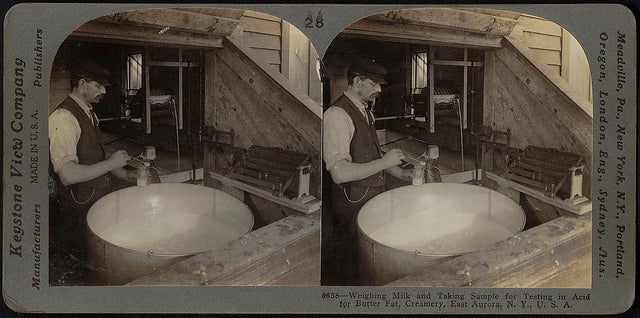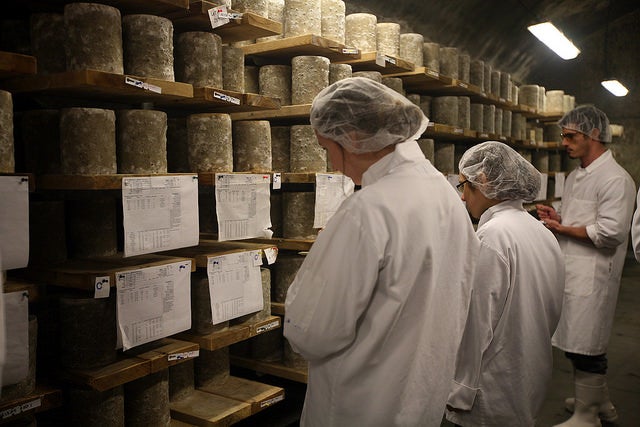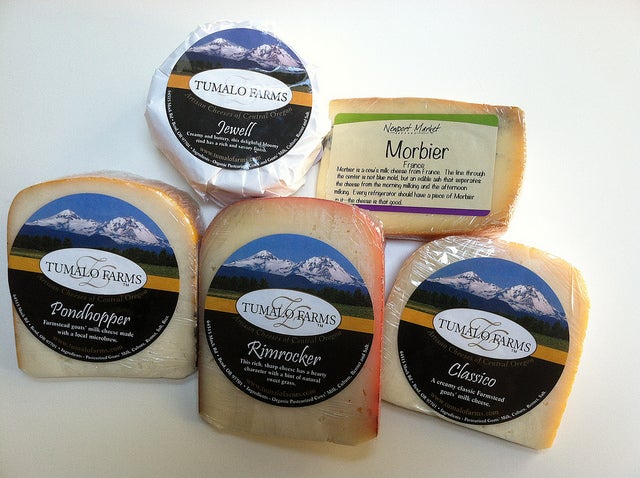This article was published in Scientific American’s former blog network and reflects the views of the author, not necessarily those of Scientific American
Sometimes American cheese gets a bad (plastic) rap but there’s a small number of cheesemakers challenging that reputation. There are about 400 craft cheesemakers currently in America, a number that has nearly doubled since 2000. Cultural anthropologist and MIT professor Heather Paxson gives us a glimpse into American artisanal cheese culture in her book, The Life of Cheese: Crafting Food and Value in America.
Paxson became curious about cheese in the early 2000s--she noticed the growing number of artisanal American cheeses carried in cheese shops throughout New York City. Unlike the kind she was used to eating growing up, these cheeses weren’t meant to be served in a sandwich; instead, they resembled European imports, made to be appreciated on their own or with wine and a baguette. Paxson’s interest shifted from that of a consumer to an anthropologist and she began wondering about the producers of this cheese--who were these people changing American cheese from Kraft to craft? What their lives were like? Where did they get their inspiration? How did they acquire their skills?
To find out more, Paxson visited 44 artisanal cheesemakers throughout the US who revealed diverse backgrounds and motivations for learning the craft. Cheesemaking culture has shifted over the years; initially a chore for pioneer wives, a new type of cheesemaker emerged in the 1980s “as an offshoot of the back-to-the-land movement.” Now it is mainly a chosen way of life consisting of generational dairy farmers, young adults skeptical about industrial agriculture, and affluent professionals starting cheesemaking as a second career.
On supporting science journalism
If you're enjoying this article, consider supporting our award-winning journalism by subscribing. By purchasing a subscription you are helping to ensure the future of impactful stories about the discoveries and ideas shaping our world today.

Weighing milk at a creamery in New York, 1906. Credit: Boston Public Library Flickr (CC BY 2.0)

One of the things Paxson found striking while visiting artisanal cheesemakers like those at Jasper Hill Farm (pictured above) was that they were "often unknowingly reviving tools, techniques and recipes that had been used in artisan factories across the United States from the late 19th century until the mid-20th century (with just a handful of factories continuing to resist automation)." Credit: Sterling College Flickr (CC BY 2.0)
The lifestyle is part of the appeal to producers and consumers of artisanal cheese but it isn’t without challenges. One concern is how to create a product that is economically viable while staying true to their beliefs. “There’s a very small profit margin in cheese. No one goes into cheese to make money — either they started with money from a previous career, or they live quite modestly and largely self-sufficiently,” explains Paxson.
She adds, “While social and environmental values and love of animals often motivated people to go into cheese making, the effort is moot if they can’t make enough money on the cheese for the businesses to be “sustainable” financially. So cheesemakers described to me complex processes of decision-making in which they weigh competing values: e.g., is it better to buy organic hay for my animals, or conventional hay from my neighbor who could use the money? The result can look from afar like a patchwork of competing values. I argue that the act of continually evaluating business decisions that are also moral decisions makes artisan agriculture meaningful and worthwhile to those who undertake it.”
Europe has a long history of cheesemaking--with some recipes dating back centuries and steeped in tradition, others are more recent traditions, like Camembert, which may be more of a Hobsbawmian “invented tradition.” The French cheese’s mythical narrative evokes a peasant past, despite most of it being made using pasteurization and industrial techniques.
While their European counterparts have an invention of tradition, Americans have what Paxson calls a “tradition of invention,” which emphasizes innovation and prioritizes change over continuity. Like the free-range ruminants used to make their cheese, artisanal American cheese makers are untethered--they aren’t tied to the past but can seek inspiration from it. This gives American artisanal cheese makers the ability to be creative and experiment with their recipes.

Tumalo Farms in Oregon makes an assortment of cheeses including Pondhopper, a cheese that takes inspiration from Gouda cheese but puts an original twist on it by substituting goat’s milk for cow’s and washing it in a local microbrew beer. Credit: SARA THOMPSON Flickr (CC BY SA 2.0)
The blending, blurring, and borrowing from European cheese culture extends with the American adaptation of the French concept of terroir and goȗt du terroir, “flavor of the terrain,” describe how the region, people, cultural tradition, and technique all contribute to the taste of a product like wine or cheese. In the United States, terroir is given an entrepreneurial and individualist twist to designate the taste of a particular farm and its products, rather than the taste of a cultural and geographical region.
In America, artisanal cheese makers are still determining how they apply the concept to their craft. It’s used to distinguish their cheese from the industrial kinds but it differs from the French application due to its idiosyncrasies and newness. Says Paxson, “When American cheese makers refer to “terroir taste” or elements in a farmstead cheese, they have had to re-scale terroir to the level of an individual farm rather than collective region, and they point to the influence of the “wildest” elements of nature — indigenous microbes or coastal fog — as opposed to (say) the breed of goat or sheep milked to make cheese.”
Paxson says that cheese culture continues to go strong in America and may be changing due to the pending regulations from the Food and Drug Administration regarding cheeses made from unpasteurized milk. In other words, American artisanal cheese culture will grow and evolve over time, much like the cultures in cheeses they make.